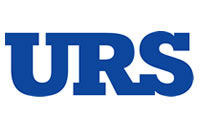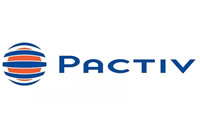Your personal vision may change over time,
but the process for realizing it shouldn’t.
“How to create and own your personal vision”
Read “Setting personal values: What do you want to be known for?”
By Tom Moriarty, published July 01, 2019 in Plant Services Magazine
In the previous three months this column has focused on having a personal mission, a personal vision, and personal values. Your personal mission is a short phrase or sentence that sums up why you exist and what you contribute to the world. Your personal vision is a mental picture of what you want your future to look like. Personal values are the principles by which you make the journey.
This month I want to explore how you act on your personal vision—how you begin to move toward achieving the things you want to achieve. Many people have ideas of what they want to achieve. Some even write these down into a vision. But Antoine de Saint-Exupéry, a pioneering French aviator and author, famously said, “A goal without a plan is just a wish.” If your goal is to achieve your personal vision, then you must have a plan. Otherwise it is just a wish.
Have a Plan
Acting on your action plan is basically project management. The project’s objective is your vision. You break the journey into a series of tasks as necessary to organize your activities and make the project manageable. Here’s a detailed description of how you can make your vision actionable:
- With your vision in mind, determine what knowledge, skills, or abilities you need to acquire. These become your task categories.
- Prioritize your task categories. Some tasks need to be completed before other tasks can be attempted or completed. A task category may also have a disproportionate impact on achieving your vision—completing one task may get you 80% of your vision, for example. Sometimes a particular task may require you to change your circumstances, but changing circumstances can be intermediate steps toward achieving your ultimate vision. For example, you may need to prove leadership skills as a supervisor before achieving an ultimate vision of being an operations or maintenance manager.
- Organize the tasks and subtasks in a Gantt chart, spreadsheet, or other document. Gantt charts are ideal because they provide plan visualization. Critical-path-method (CPM) charts also are good for this, but any means can work. You want the ability to track your progress and update the tasks and subtasks as you progress.
- Determine which items you can accomplish without support from others and which items will require support from other individuals or organizations. Identify these other parties.
- Start on the top three tasks or subtasks. For the things you can do for yourself, put reminders on your personal calendar and start working on them. For tasks or subtasks that you need support from others to complete, explain to those persons what you are trying to accomplish and why—what your ultimate vision is and how their assistance contributes to your ultimate vision. Discuss the scheduling of support and agree on scheduled activities. Put these activities on your personal calendar and ask the other party to put them on their calendar. For both the tasks you can do without support and the tasks that necessitate assistance from others, be consistent, attentive, and assertive in managing them to completion.
Remember that your personal vision is likely to change as you go through different phases of your life (single, married, married with children, stressed by high school-age kids in your life, empty-nester, and readying for retirement). Your vision will also change as you accomplish things. You may have had the vision of becoming a master electrician or shift supervisor, but once that is achieved, you decide you want to become a vibration analyst or a function manager. That’s great. You’re growing personally and/or professionally.
When you do have a change in your vision, revisit your action plan. Determine what knowledge, skills, or ability you need. Prioritize the tasks you need to get there. Organize the tasks and subtasks. Identify what you can do without support, and who you need support from. Start addressing the three highest-priority tasks. Execute the plan.
Goals without a plan are just wishes. Spend time organizing your thoughts and actions so you can act on and achieve your vision. As your life changes, update your personal vision, but keep working toward your end-state goals. Go forth and do great things.
This article is part of our monthly Human Capital column. Read more from Tom Moriarty.


















